BANGGAO ALTHEA,SITHCCC007
.docx
keyboard_arrow_up
School
TAFE Queensland *
*We aren’t endorsed by this school
Course
MISC
Subject
Business
Date
Jan 9, 2024
Type
docx
Pages
41
Uploaded by PrivateRabbit2623
Student Name:
Althea Camille Banggao
Student ID Number:
22200780
Trainer/Assessor Name:
Chung Tse Cheng
Class:
CERTIFICATE IV IN COMMERCIAL COOKERY
Contextualised and customised by MIA RTO: 40813
SITHCCC007
Prepare stocks, sauces and soups
Learner Workbook
Version 2.0
P
a
g
e
| 1
Table of Contents
Table of Contents
....................................................................................................................................
1
Instructions to Learner
............................................................................................................................
2
Assessment instructions
.......................................................................................................................
2
Assessment requirements
....................................................................................................................
4
Observation/Demonstration
...................................................................................................................
5
Assessment Cover Sheet
.........................................................................................................................
6
Performance Criteria
...............................................................................................................................
7
ACTIVITIES AND WRITTEN QUESTIONS
....................................................................................................
8
Activity 1A
.............................................................................................................................................
8
Activity 1B
.............................................................................................................................................
9
Activity 1C
...........................................................................................................................................
10
Activity 1D
..........................................................................................................................................
11
Activity 2A
...........................................................................................................................................
12
Activity 2B
...........................................................................................................................................
13
Activity 2C
...........................................................................................................................................
14
Activity 3A
...........................................................................................................................................
15
Activity 3B
...........................................................................................................................................
16
Activity 3C
...........................................................................................................................................
17
Activity 3D
..........................................................................................................................................
18
Activity 4A
...........................................................................................................................................
19
Activity 4B
...........................................................................................................................................
20
Activity 4C
...........................................................................................................................................
21
Activity 4D
..........................................................................................................................................
22
Activity 4E
...........................................................................................................................................
23
Activity 5A
...........................................................................................................................................
24
Activity 5B
...........................................................................................................................................
25
Activity 5C
...........................................................................................................................................
26
Activity 5D
..........................................................................................................................................
27
Activity 5E
...........................................................................................................................................
28
Activity 5F
...........................................................................................................................................
29
MAJOR ASSESSMENTS
...........................................................................................................................
30
Section A: Skills Activity
......................................................................................................................
31
Section B: Knowledge Activity (Q & A)
................................................................................................
33
Section C: Performance Activity
.........................................................................................................
35
SITHCCC007 Prepare stocks, sauces and soups (Learner Workbook) Version 2.0
P
a
g
e
| 2
SITHCCC007 Prepare stocks, sauces and soups (Learner Workbook) Version 2.0
P
a
g
e
| 3
Instructions to Learner
Assessment instructions
Overview
Prior to commencing the assessments, your trainer/assessor will explain each assessment task and the terms and conditions relating to the submission of your assessment task. Please consult with your trainer/assessor if you are unsure of any questions. It is important that you understand and adhere to the terms and conditions, and address fully each assessment task. If any assessment task is not fully addressed, then your assessment task will be returned to you for resubmission. Your trainer/assessor will
remain available to support you throughout the assessment process. Written work
Assessment tasks are used to measure your understanding and underpinning skills and knowledge of the overall unit of competency. When undertaking any written assessment tasks, please ensure that you address the following criteria:
Address each question including any sub-points
Demonstrate that you have researched the topic thoroughly
Cover the topic in a logical, structured manner
Your assessment tasks are well presented, well referenced and word processed
Your assessment tasks include your full legal name on each and every page.
Active participation
It is a condition of enrolment that you actively participate in your studies. Active participation is completing all the assessment tasks on time. Plagiarism
Plagiarism is taking and using someone else's thoughts, writings or inventions and representing them as your own. Plagiarism is a serious act and may result in a learner’s exclusion from a course. When you have any doubts about including the work of other authors in your assessment, please consult your trainer/assessor. The following list outlines some of the activities for which a learner can be accused of plagiarism:
Presenting any work by another individual as one's own unintentionally
Handing in assessments markedly similar to or copied from another learner
Presenting the work of another individual or group as their own work
Handing in assessments without the adequate acknowledgement of sources used, including assessments taken totally or in part from the internet.
If it is identified that you have plagiarised within your assessment, then a meeting will be organised to discuss this with you, and further action may be taken accordingly.
Collusion
Collusion is the presentation by a learner of an assignment as their own that is, in fact, the result in whole or in part of unauthorised collaboration with another person or persons. Collusion involves the cooperation of two or more learners in plagiarism or other forms of academic misconduct and, as such, both parties are subject to disciplinary action. Collusion or copying from other learners is not permitted and will result in a “0” grade and NYC.
Assessments must be typed using document software such as (or similar to) MS Office. Handwritten assessments will not be accepted (unless, prior written confirmation is provided by the trainer/assessor to confirm).
Competency outcome
SITHCCC007 Prepare stocks, sauces and soups (Learner Workbook) Version 2.0
P
a
g
e
| 4
There are two outcomes of assessments: S = Satisfactory and NS = Not Satisfactory (requires more training and experience).
Once the learner has satisfactorily completed all the tasks for this module the learner will be awarded “Competent” (C) or “Not yet Competent” (NYC) for the relevant unit of competency. If you are deemed “Not Yet Competent” you will be provided with feedback from your assessor and will be given another chance to resubmit your assessment task(s). If you are still deemed as “Not Yet Competent” you will be required to re-enrol in the unit of competency.
Additional evidence
If we, at our sole discretion, determine that we require additional or alternative information/evidence in order to determine competency, you must provide us with such information/evidence, subject to privacy
and confidentiality issues. We retain this right at any time, including after submission of your assessments.
Confidentiality
We will treat anything, including information about your job, workplace, employer, with strict confidence, in accordance with the law. However, you are responsible for ensuring that you do not provide us with anything regarding any third party including your employer, colleagues and others, that they do not consent to the disclosure of. While we may ask you to provide information or details about aspects of your employer and workplace, you are responsible for obtaining necessary consents and ensuring that privacy rights and confidentiality obligations are not breached by you in supplying us with such information.
Assessment appeals process
If you feel that you have been unfairly treated during your assessment, and you are not happy with your assessment and/or the outcome as a result of that treatment, you have the right to lodge an appeal. You must first discuss the issue with your trainer/assessor. If you would like to proceed further with the request after discussions with your trainer/assessor, you need to lodge your appeal to the course coordinator, in writing, outlining the reason(s) for the appeal. Recognised prior learning
Candidates will be able to have their previous experience or expertise recognised on request.
Special needs
Candidates with special needs should notify their trainer/assessor to request any required adjustments as soon as possible. This will enable the trainer/assessor to address the identified needs immediately.
Authenticity
Students are required to sign the Assessment Cover sheet, indicating that the work they have submitted for assessment is their own.
Practical tasks and clinic observations by the assessor during placement visits ensure that the assessor sees the student demonstrating the skills and knowledge required of this unit.
Supervisor reports (where applicable) require clinic supervisors to sign that they have observed the student undertaking the tasks detailed in the checklist
Reasonable adjustment
A legislation and regulatory framework underpins and supports the delivery of vocational education and training across Australia. Under this framework, providers of vocational education and training must take
steps to ensure that learners with recognised disabilities can access and participate in education and training on the same basis as learners without disabilities. Sometimes reasonable adjustments are made to the learning environment, training delivery, learning resources and / or assessment tasks to accommodate the particular needs of a learner with a disability. An adjustment is reasonable if it can accommodate the learner’s particular needs, while also taking into account such as the views of the SITHCCC007 Prepare stocks, sauces and soups (Learner Workbook) Version 2.0
P
a
g
e
| 5
learner, the potential effect of the adjustment on the learner and others, the cost and benefits of making
the adjustment.
Adjustment must:
Be discussed and agreed to by the learner with a disability
Benefit the learner with a disability
Maintain the competency standards
Be reasonable to expect in a workplace.
Adjustments are not required if they could
Cause the RTO unjustifiable hardship.
Harm other learners.
Making reasonable adjustments requires MIA to balance the need for change with the expense or effort involved in making this change. If an adjustment requires a disproportionately high expenditure or disruption it is not likely to be reasonable.
Some examples of reasonable adjustments that could be made for the assessments in this workbook include:
Verbal responses to written activities (such as question and answers tasks and case studies).
Conducting assessor clinic observations via Skype or other video format (for example, in cases of students in remote areas).
Rescheduling assessor observation in the event that clinic conditions may not be suitable for example, safety concerns, required resources not being available, lack of appropriate clients on the day, etc.
Providing students with large – print copies of the Student Workbook.
Record any reasonable adjustments made in the space provided in the relevant task’s checklist and in the
assessment record.
Assessment requirements
Assessment can either be:
Direct observation
Product-based methods e.g. reports, role plays, work samples
Portfolios – annotated and validated
Questioning
Third party evidence.
If submitting third party evidence, the Third Party Observation/Demonstration document must be completed by the agreed third party.
Third parties can be:
Supervisors
Trainers
Team members
Clients
Consumers.
The third party observation must be submitted to your trainer/assessor, as directed. The third party observation is to be used by the assessor to assist them in determining competency.
The assessment activities in this workbook assess aspects of all the elements, performance criteria, skills and knowledge and performance requirements of the unit of competency.
To demonstrate competence in this unit you must undertake all activities in this workbook and have them deemed satisfactory by the assessor. If you do not answer some questions or perform certain tasks, and therefore you are deemed to be Not Yet Competent, your trainer/assessor may ask you SITHCCC007 Prepare stocks, sauces and soups (Learner Workbook) Version 2.0
Your preview ends here
Eager to read complete document? Join bartleby learn and gain access to the full version
- Access to all documents
- Unlimited textbook solutions
- 24/7 expert homework help
Related Questions
Question 1
________ is the process of developing new goods and services.
Select one:
a. Reengineering
b. Innovation
c. Restructuring
d. Functional reorganization
Question 2
A ________ is a group of workers who assume responsibility for performing all the operations necessary for completing a specified stage in the manufacturing process.
Select one:
a. quality circle
b. control group
c. flexible work team
d. kaizen group
Question 3
A finance manager observes that the return-on-investment (ROI) for his organization is only 10 percent compared to the industry average of 20 percent. The manager informs top managers about her observation. According to this information, this organization is in which stage of the action research process?
Select one:
a. diagnosing the organization
b. determining the desired future action
c. eliminating obstacles to change
d. selecting a strategy for change
Question 4
A geographic structure is most likely to be appropriate for which of the following…
arrow_forward
The function of management that compares planned results to actual results is known as:
Select one:
a. decision making.
b. directing and motivating.
c. controlling.
d. planning.
Question 37
Question text
Pexto Manufacturing uses a piece rate system to pay its workers. The straight piece rate is RM1.20 per unit of output. In week 1, worker A produced 340 units whilst worker B produced 330 units. Calculate the earnings for worker A.
Select one:
a. RM204
b. RM396
c. RM408
d. RM198
Question 38
Which of the following statements about management accounting is/are true?
i. It is a part of an organisation's management information system.
ii. It is relied on by managers to plan and control an organisation's operations.
iii. It is relied on by external users to make investment decisions.
Select one:
a. i and iii
b. i and ii
c. i, ii and iii
d. ii and iii
arrow_forward
Please answer in 1 hour
arrow_forward
Please do not give solution in image format thanku
arrow_forward
DO NOT COPY FROM OTHER WEBSITES
arrow_forward
0% plagiarism please write it own your own words. And stop rejecting it, it’s not an essay.
Question: briefly describe the below departments:
1- retail department
2-quality control department
3-finance department
arrow_forward
David, whose first job is supervising a plastic production line, however, is not getting support from all members on cross-functional team in
this production line he supervises. Particularly, Roberta, a senior quality control manager, seems to no follow his directions and tries to
influence other members to go in another direction. The source of conflict in this case may be
Select one:
a. a personality clash.
b. ambiguous jurisdictions.
C. status differences.
d. communication failure.
arrow_forward
Topic: 8 Daily Hassles by Lazaruz
What kind of hassle is Jitters?
a. Time pressure hassle
b. Inner concern hassle
c. Environmental hassle
d. None of the above
arrow_forward
13
arrow_forward
Question 13
Organizations that pay less than market leaders do so because they are "market
driven."
True
False
Question 14
Compensation surveys provide the data for translating a policy into pay levels, pay
mix, and structures.
True
False
Question 15
Grades and ranges offer managers the flexibility to deal with pressures from external
markets and within the organization.
True
False
Question 16
A pay range includes a minimum, a midpoint, and a maximum.
True
False
arrow_forward
Question 23
Khadija is the Production Supervisor at Dana's Pastries. She directly manages three employees and reports to
the Head of the Production department.
.Explain your
Use the 'Differentlation as organizing step' to classify Khadija's position
answer
Use the editor to format your answer
arrow_forward
Question-2 Read the given scenario and answer the following. Use separate heading to answer each point. The maximum limit of words-count in each part is 300 words.
A Rose Is a Rose, but Only If It Is Fresh
Supply chains for food and flowers must be fast, and they must be good. When the food supply chain has a problem, the best that can happen is the customer does not get fed on time; the worst that happens is the customer gets food poisoning and dies. In the floral industry, the timing and temperature are also critical. Indeed, flowers are the most perishable agricultural item—even more so than fish. Flowers not only need to move fast, but they must also be kept cool, at a constant temperature of 33 to 37 degrees. And they must be provided preservative-treated water while in transit. Roses are especially delicate, fragile, and perishable.
Eighty percent of the roses sold in the U.S. market arrive by air from rural Colombia and Ecuador. Roses move through this supply chain via an…
arrow_forward
4.
is a technique that tracks employee movement patterns through various jobs.
OA. Markov analysis
O B. Human resource planning
OC. Trend analysis
OD. Task identity
Mark for review (Will be highlighted on the review page)
ce Previous Question
Next Question >>
arrow_forward
1:26
< Back 2. MIS ASSIGNMEN 2 (J...
: 5)
:6)
SUBMISSION DATE: 10th May 2023
EIB20203 MIS-GROUP ASSIGNMENT 2
You have to choose a topic related in MANAGEMENT
INFORMATION SYSTEM according to syllabus (CANNOT
BE SAME WITH OTHER GROUP). Write a report by
explain the topic according to:
Introduction
2 Definition (Conceptual and operational)
Content of topics
Problems or issues relating to the topic in term of
Malaysia and global contexts
Suggestion to handle the problems/ issues (with
significant examples)
Summary of the topic
7. References
INSTRUCTIONS/WRITING FORMAT:
1. This assignment is to be completed in GROUP.
2 Essay form. This assignment must be TYPE. Use
WORD.
Times New Roman / Arial. Font 12
A4 paper. About 10 pages. Not more.
5. Margin: Left 1" Right 1" Top 1" & Bottom 1"
Spacing between sentences 1.5
7. Reference in any recognized format. (APA, Harvard etc.)
NO PLAGIARISM.
Dateline 10.05.2023
10. Each group's representative please e-mail me back the
completed assignment to…
arrow_forward
need help asap
arrow_forward
Exercise 11. Open a blank worksheet in Excel. Enter the First name, Last Name, Gender, Department, andYearly Salary (with 2 decimals) for 10 fictitious people in Columns A-E, Beginning in Row 2. Besure to enter column headings (Row 1) and align them with the data. Adjust column widths asneeded.2. Sort the data by Last Name.3. Insert a column before the name (new column A), and enter the Employee Number. Type onlythe first two numbers, then select both and copy down for autofill.4. In Column G, type the heading “Tax Withheld”, and enter a formula that computes it. Assume20% of the salary is withheld for taxes.5. The new tax code give a Tax Break of $2,000 for all those who have more than $20,000withheld. Use an IF statement to compute this in Column H. (If Tax Witheld is greater than$20000, then Tax Break is $2000; otherwise, Tax Break is $0.)6. Assume now that the Tax Break is more complex. If you had a least $10,000 withheld, you get$500 back. If you had at least $15,000 withheld, you…
arrow_forward
Exercise 11. Open a blank worksheet in Excel. Enter the First name, Last Name, Gender, Department, andYearly Salary (with 2 decimals) for 10 fictitious people in Columns A-E, Beginning in Row 2. Besure to enter column headings (Row 1) and align them with the data. Adjust column widths asneeded.2. Sort the data by Last Name.3. Insert a column before the name (new column A), and enter the Employee Number. Type onlythe first two numbers, then select both and copy down for autofill.4. In Column G, type the heading “Tax Withheld”, and enter a formula that computes it. Assume20% of the salary is withheld for taxes.5. The new tax code give a Tax Break of $2,000 for all those who have more than $20,000withheld. Use an IF statement to compute this in Column H. (If Tax Witheld is greater than$20000, then Tax Break is $2000; otherwise, Tax Break is $0.)6. Assume now that the Tax Break is more complex. If you had a least $10,000 withheld, you get$500 back. If you had at least $15,000 withheld, you…
arrow_forward
Exercise 11. Open a blank worksheet in Excel. Enter the First name, Last Name, Gender, Department, andYearly Salary (with 2 decimals) for 10 fictitious people in Columns A-E, Beginning in Row 2. Besure to enter column headings (Row 1) and align them with the data. Adjust column widths asneeded.2. Sort the data by Last Name.3. Insert a column before the name (new column A), and enter the Employee Number. Type onlythe first two numbers, then select both and copy down for autofill.4. In Column G, type the heading “Tax Withheld”, and enter a formula that computes it. Assume20% of the salary is withheld for taxes.5. The new tax code give a Tax Break of $2,000 for all those who have more than $20,000withheld. Use an IF statement to compute this in Column H. (If Tax Witheld is greater than$20000, then Tax Break is $2000; otherwise, Tax Break is $0.)6. Assume now that the Tax Break is more complex. If you had a least $10,000 withheld, you get$500 back. If you had at least $15,000 withheld, you…
arrow_forward
Attendance of students using facial recognition.
1.introduction
2.Scope of the study
3. Objective
4.requirement
5.conclusions
Explain every numbered points
arrow_forward
SEE MORE QUESTIONS
Recommended textbooks for you
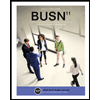
BUSN 11 Introduction to Business Student Edition
Business
ISBN:9781337407137
Author:Kelly
Publisher:Cengage Learning
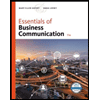
Essentials of Business Communication (MindTap Cou...
Business
ISBN:9781337386494
Author:Mary Ellen Guffey, Dana Loewy
Publisher:Cengage Learning
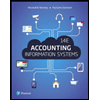
Accounting Information Systems (14th Edition)
Business
ISBN:9780134474021
Author:Marshall B. Romney, Paul J. Steinbart
Publisher:PEARSON
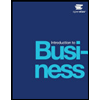
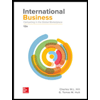
International Business: Competing in the Global M...
Business
ISBN:9781259929441
Author:Charles W. L. Hill Dr, G. Tomas M. Hult
Publisher:McGraw-Hill Education
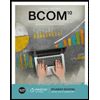
Related Questions
- Question 1 ________ is the process of developing new goods and services. Select one: a. Reengineering b. Innovation c. Restructuring d. Functional reorganization Question 2 A ________ is a group of workers who assume responsibility for performing all the operations necessary for completing a specified stage in the manufacturing process. Select one: a. quality circle b. control group c. flexible work team d. kaizen group Question 3 A finance manager observes that the return-on-investment (ROI) for his organization is only 10 percent compared to the industry average of 20 percent. The manager informs top managers about her observation. According to this information, this organization is in which stage of the action research process? Select one: a. diagnosing the organization b. determining the desired future action c. eliminating obstacles to change d. selecting a strategy for change Question 4 A geographic structure is most likely to be appropriate for which of the following…arrow_forwardThe function of management that compares planned results to actual results is known as: Select one: a. decision making. b. directing and motivating. c. controlling. d. planning. Question 37 Question text Pexto Manufacturing uses a piece rate system to pay its workers. The straight piece rate is RM1.20 per unit of output. In week 1, worker A produced 340 units whilst worker B produced 330 units. Calculate the earnings for worker A. Select one: a. RM204 b. RM396 c. RM408 d. RM198 Question 38 Which of the following statements about management accounting is/are true? i. It is a part of an organisation's management information system. ii. It is relied on by managers to plan and control an organisation's operations. iii. It is relied on by external users to make investment decisions. Select one: a. i and iii b. i and ii c. i, ii and iii d. ii and iiiarrow_forwardPlease answer in 1 hourarrow_forward
- Please do not give solution in image format thankuarrow_forwardDO NOT COPY FROM OTHER WEBSITESarrow_forward0% plagiarism please write it own your own words. And stop rejecting it, it’s not an essay. Question: briefly describe the below departments: 1- retail department 2-quality control department 3-finance departmentarrow_forward
- David, whose first job is supervising a plastic production line, however, is not getting support from all members on cross-functional team in this production line he supervises. Particularly, Roberta, a senior quality control manager, seems to no follow his directions and tries to influence other members to go in another direction. The source of conflict in this case may be Select one: a. a personality clash. b. ambiguous jurisdictions. C. status differences. d. communication failure.arrow_forwardTopic: 8 Daily Hassles by Lazaruz What kind of hassle is Jitters? a. Time pressure hassle b. Inner concern hassle c. Environmental hassle d. None of the abovearrow_forward13arrow_forward
- Question 13 Organizations that pay less than market leaders do so because they are "market driven." True False Question 14 Compensation surveys provide the data for translating a policy into pay levels, pay mix, and structures. True False Question 15 Grades and ranges offer managers the flexibility to deal with pressures from external markets and within the organization. True False Question 16 A pay range includes a minimum, a midpoint, and a maximum. True Falsearrow_forwardQuestion 23 Khadija is the Production Supervisor at Dana's Pastries. She directly manages three employees and reports to the Head of the Production department. .Explain your Use the 'Differentlation as organizing step' to classify Khadija's position answer Use the editor to format your answerarrow_forwardQuestion-2 Read the given scenario and answer the following. Use separate heading to answer each point. The maximum limit of words-count in each part is 300 words. A Rose Is a Rose, but Only If It Is Fresh Supply chains for food and flowers must be fast, and they must be good. When the food supply chain has a problem, the best that can happen is the customer does not get fed on time; the worst that happens is the customer gets food poisoning and dies. In the floral industry, the timing and temperature are also critical. Indeed, flowers are the most perishable agricultural item—even more so than fish. Flowers not only need to move fast, but they must also be kept cool, at a constant temperature of 33 to 37 degrees. And they must be provided preservative-treated water while in transit. Roses are especially delicate, fragile, and perishable. Eighty percent of the roses sold in the U.S. market arrive by air from rural Colombia and Ecuador. Roses move through this supply chain via an…arrow_forward
arrow_back_ios
SEE MORE QUESTIONS
arrow_forward_ios
Recommended textbooks for you
 BUSN 11 Introduction to Business Student EditionBusinessISBN:9781337407137Author:KellyPublisher:Cengage Learning
BUSN 11 Introduction to Business Student EditionBusinessISBN:9781337407137Author:KellyPublisher:Cengage Learning Essentials of Business Communication (MindTap Cou...BusinessISBN:9781337386494Author:Mary Ellen Guffey, Dana LoewyPublisher:Cengage Learning
Essentials of Business Communication (MindTap Cou...BusinessISBN:9781337386494Author:Mary Ellen Guffey, Dana LoewyPublisher:Cengage Learning Accounting Information Systems (14th Edition)BusinessISBN:9780134474021Author:Marshall B. Romney, Paul J. SteinbartPublisher:PEARSON
Accounting Information Systems (14th Edition)BusinessISBN:9780134474021Author:Marshall B. Romney, Paul J. SteinbartPublisher:PEARSON
 International Business: Competing in the Global M...BusinessISBN:9781259929441Author:Charles W. L. Hill Dr, G. Tomas M. HultPublisher:McGraw-Hill Education
International Business: Competing in the Global M...BusinessISBN:9781259929441Author:Charles W. L. Hill Dr, G. Tomas M. HultPublisher:McGraw-Hill Education

BUSN 11 Introduction to Business Student Edition
Business
ISBN:9781337407137
Author:Kelly
Publisher:Cengage Learning

Essentials of Business Communication (MindTap Cou...
Business
ISBN:9781337386494
Author:Mary Ellen Guffey, Dana Loewy
Publisher:Cengage Learning

Accounting Information Systems (14th Edition)
Business
ISBN:9780134474021
Author:Marshall B. Romney, Paul J. Steinbart
Publisher:PEARSON


International Business: Competing in the Global M...
Business
ISBN:9781259929441
Author:Charles W. L. Hill Dr, G. Tomas M. Hult
Publisher:McGraw-Hill Education
